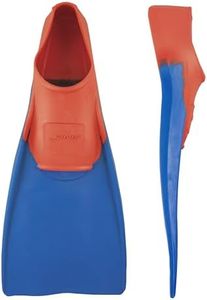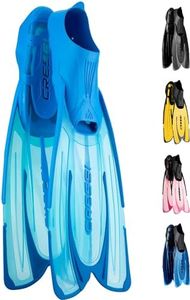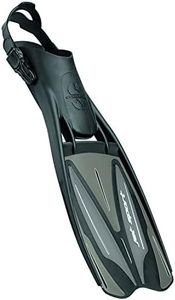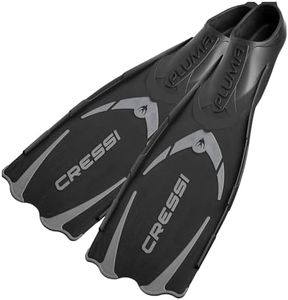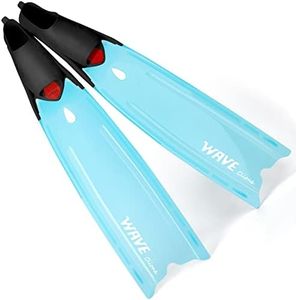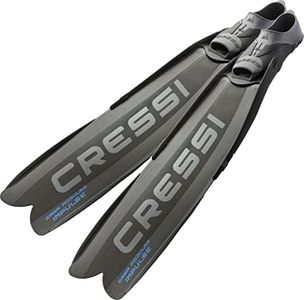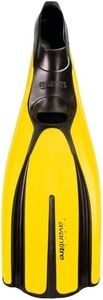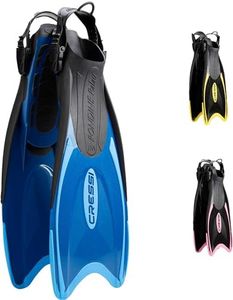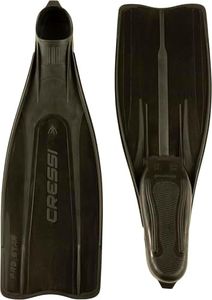We Use CookiesWe use cookies to enhance the security, performance,
functionality and for analytical and promotional activities. By continuing to browse this site you
are agreeing to our privacy policy
10 Best Freediving Fins
From leading brands and best sellers available on the web.Buying Guide for the Best Freediving Fins
Choosing the right freediving fins is crucial because they play a significant role in your underwater experience, affecting how efficiently you move and how comfortable you feel. The key is to focus on how and where you’ll use the fins, your personal comfort, and your skill level. Understanding the main specifications will help you make an informed decision that matches your needs and enhances your freediving adventures.Blade MaterialBlade material determines the flexibility, durability, and overall performance of the fins. Common options are plastic, fiberglass, and carbon fiber. Plastic blades are generally more affordable and durable, best for beginners or those who might encounter rough surfaces. Fiberglass offers more efficiency and is a good choice for intermediate users seeking better response and power. Carbon fiber is the lightest and most efficient, ideal for experienced freedivers wanting maximum efficiency and minimal effort, but it can be more delicate. Think about your experience level and how often you’ll be using your fins to decide which material suits you best.
Blade LengthBlade length affects the power and efficiency of your kicks underwater. Shorter blades are easier to maneuver and require less effort, which is comfortable for beginners or those doing shallow dives. Medium blades strike a balance, offering a mix of maneuverability and power, making them suitable for a range of skill levels and depths. Longer blades move more water with each kick, making them ideal for experienced divers looking to conserve energy during long, deep dives. Choose a blade length based on your diving style—deeper, longer dives benefit from longer blades, while shorter blades are easier for casual or shallow dives.
Foot Pocket TypeFoot pockets secure the fins to your feet, and they come in two main types: closed-heel (full foot) and open-heel. Closed-heel pockets are worn barefoot and provide a snug fit, which is preferred for warm water and when comfort and efficiency are your priorities. Open-heel designs are used with neoprene boots, making them suitable for colder water but sometimes less efficient due to added bulk. Consider where you’ll be diving and whether you prefer diving barefoot or with boots when choosing the foot pocket.
Blade StiffnessBlade stiffness refers to how much the blade resists bending as you kick. Softer blades require less effort and are more comfortable for beginners or long-duration dives, but they offer less power. Medium stiffness provides a good balance for most users—enough flexibility for comfort but enough resistance for good propulsion. Stiffer blades offer the most power for strong kicks and rapid movement but can tire you out quickly; they're best for experienced, strong-legged divers focusing on deep or fast dives. Your leg strength and diving goals should guide you: pick a blade stiffness that matches how much effort you want to put in and your physical conditioning.
Weight and PortabilityThe weight of the fins affects how easy they are to travel with and how they feel in the water. Lighter fins are easier to pack and carry, reducing fatigue during transport and making them comfortable for longer dives. Heavier fins may add some power, but can be difficult to manage both in and out of the water. Consider how often you’ll be traveling with your fins and how important ease of handling is for you when choosing.
